-
Genealogy & Names
-
Tourist Information
-
Culture & Reference
|
Nov 2020 
Irish Christmas Street Scene from Free Photos Of Ireland |


find out more |

| Popular Articles from Recent Newsletters: |


|
The restrictions imposed in Ireland by the Irish Government in the wake of a resurgence of Covid-19 cases in October have begun to be eased. Many businesses can now re-open although pubs that do not serve food remain closed. Social distancing and mask-wearing are still very much the order of the day with the hope being that the relaxation of the rules prior to Christmas will not see a big resurgence of the virus in the new year. Relative to the rest of Europe Ireland is in a pretty good condition with the prevalence of the virus being much lower than in the likes of the UK, Spain, France and Italy. The news that several vaccines are to become available has been greeted with great relief in Ireland, as it has around the world. The UK has moved faster than most in approving the new vaccines and expect to start their program of distribution in the coming weeks. Irish health authorities however expect that the initial roll-out of the vaccine in Ireland will begin in the early weeks of January. 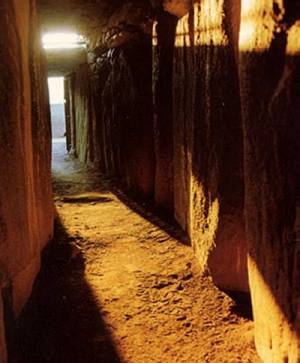 Squeezing into the Passage Tomb at Newgrange in the middle of the night and in the very depths of Winter may not sound like much fun. But tickets for this annual event are so over-subscribed that the annual draw for the small allocation of places is keenly contested.
Squeezing into the Passage Tomb at Newgrange in the middle of the night and in the very depths of Winter may not sound like much fun. But tickets for this annual event are so over-subscribed that the annual draw for the small allocation of places is keenly contested.
The Tomb is over 5,200 years old and has a magical quality at the Winter Solstice every year. Such is the alignment of the roof-box in the tomb that the morning daybreak illuminates the chamber with brilliant sunlight in a feat of ancient engineering that never fails to amaze. This year the event will be very different. Thanks to Covid-19 Newgrange is closed to public access (if ever there was a location where social distancing would be impossible then Newgrange is it!). But the solstice on December 21st will still be available to view via the more modern feat of amazing engineering known as live-streaming. No ticket required. The huge draw of electricity from a particular Dublin street had power-supply experts baffled for a while. That is until they had a look at the actual street itself. 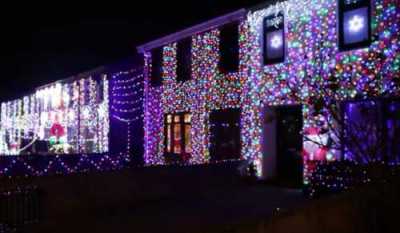
While decorating our houses with Christmas lights is by now a time-honored tradition, a chap from Finglas in Dublin has taken the annual event to a different level. Dylan Walsh has created an amazing display that draws visitors from across the city. 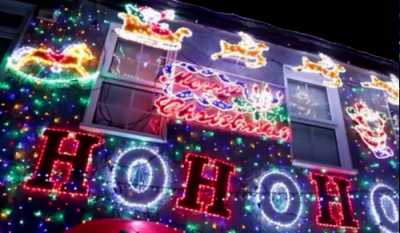
In fact he has inspired his neighbors to such an extent that his entire street is currently glowing! Dylan hopes to raise some cash for ARC Cancer Support through his gofundme page at cappagh-green-christmas-lights-in-aid-of-arc . The power-supply experts can stand down for the duration. |

|
||||

|
The road between Coleraine and Limavady is a lonely road even now, but can you imagine what it was like for the traveller in the 18th century? The mountains and the valleys made the journey not only lonely but hazardous and dangerous. The inland route, along the Roe Valley, was locally called the Murderhole Road because it was known to harbour gangs of highwaymen who disposed of the bodies of their victims in the Murderer’s Hole at the foot of Windy Hill. 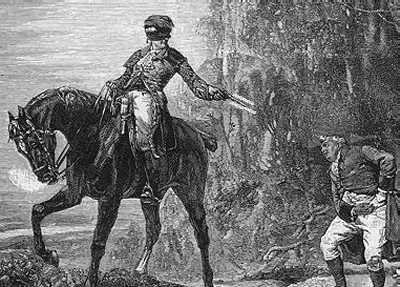
Three or four thieves would hold up any coach or traveller to rob them but because it was hard times throughout the country they fought often with each other for loot. It wasn’t just the thought of highwaymen that frightened people, but the tales of the ghosts of people who were sacrificed in pre-Christian times that roamed this desolate area. One of the most notorious of these highwaymen was Cushy Glen who had learnt how to handle a pistol in the army before he was dishonourablely discharged for thievery. Once Cushy settled into a life of crime he used the pistol to hold up people in Limavady and further afield. Only when his brother James was hanged in Derry for stealing, did Cushy made himself scarce. Soon after, he met Kitty Glenn and set up home with her near the Sconce on the Murderhole Road. As the saying goes, “like is attracted to like” and Kitty persuaded him not to share his ill-gotten gains with any other gangs. They could do better together. She convinced him that he could find out who was worth robbing if he hung around Bridge Street in Coleraine, watching farmers doing their business in the taverns and then lying in wait for them along the Murderhole Road. Many didn’t know of the area’s history nor the dangers that lurked in its remote byways. Cushy Glen was not a great marksman so would shoot at the horse, it being a bigger target, and when the unwary traveller fell to the ground, he jumped from his hiding place and slit his throat before the victim had time to recover. He stole their valuables and buried their bodies in Murder Hole at the bottom of the Windy Hill. The unmarked graves of these travellers who 'disappeared' are said to lie somewhere in the mountainous vicinity, giving the road its creepy name. Cushy Glen eventually met a sticky end when he was killed by a would-be victim, named Harry Hopkins who saw Cushy emerge from the bushes brandishing a pistol. He drew his own and shot Glen dead. It appears that Harry was a much better marksman than Cushy. Cushy’s body was discovered along the road, but no trace of Kitty Glenn and the stolen loot were never found. Cushy Glen was the last highwayman in Ireland to be killed on Irish soil. Legend says that his ghost haunts the area, and that he often shocks unguarded drivers by his sudden, frightening appearance. ~~~ 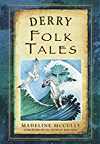 Madeline McCurry is the Irish author of 'Haunted Donegal' and 'Derry Folk Tales'.
Madeline McCurry is the Irish author of 'Haunted Donegal' and 'Derry Folk Tales'.
|


find out more |

|
Like so many countries Ireland has its own unique set of traditions and beliefs associated with Christmas, many of which are steeped in the ancient Gaelic and Catholic heritage of the country. THE CANDLE IN THE WINDOW A tradition that was very widespread in the 1970's but which seems to be dying out somewhat and especially in urban areas is the 'candle in the window'. Symbolically the candle represented a welcome to Joseph and Mary as they wandered in search of lodgings. The candle indicated to strangers and especially to the poor that there may be an offering of food in the house within. 
During the Penal Times in Ireland Catholic priests were forbidden to perform Mass so the candle acted as a covert signal that the occupier was a Catholic believer and that mass could be held on the premises. MARY Mary the mother of Jesus was especially revered in Ireland at Christmas. There are many traditions involving girls named Mary which at one time was by far the most popular female name in the country. The candle in the window was often to be lit by a girl named Mary and only extinguished by her. The removal of decorations in January were also often to be punctuated by a visit from a Mary. THE WREN BOY PROCESSION The Wren Boy Procession has been revived in recent years with parades being held on St. Stephens Day in Sandymount in Dublin and other locations. There are several legends regarding the 'wren boy'. 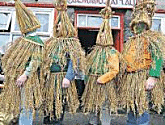
One such tale tells of a plot in a village against some British soldiers during Penal times. The soldiers were surrounded and were about to be ambushed when a group of wrens pecked on their drums raising the alarm. The plot failed and thus the wren became known as 'The Devil's Bird'. To commemorate this deed a procession takes place where a pole with a holly bush is carried from house to house and families dress up in old clothes and with blackened faces. In ancient times an actual wren bird would be killed and placed on top of the pole. It is possible that the very Irish tradition of visiting houses of friends and relatives on St. Stephens Day traces its origin to these events. THE LADEN TABLE 
The centre-piece of the Christmas holiday in Ireland is the Christmas Dinner. After the often lavish meal the kitchen table was again set and on it was placed some bread and milk and the table adorned with the welcoming candle. If Mary and Joseph, or any wandering traveller, happened by then they could avail of the hospitality. LITTLE CHRISTMAS All Christmas decorations are usually taken down and put away on 'Little Christmas' (January 6th.). It is considered very bad luck to remove the decorations and Christmas tree before this date. IRISH CHRISTMAS DECORATIONS The widespread practice of placing a ring of Holly on a front door started in Ireland. Holly was one of the main plants that flourished at Christmas time in Ireland and gave the poorer population means with which to decorate their homes. MORE MODERN TRADITIONS Modern Ireland has changed vastly from the times when these Irish Christmas traditions flourished and have often been replaced with newer more secular ones. St. Stephen's Day is still regarded as a day to visit family and friends but is also a great sporting day with horse-racing, football and a myriad of other sports taking prominence. 
Many workers take the entire week off between Christmas Day and New Years Day with many businesses completely closing down during this time. Midnight Mass on Christmas Eve is also very well attended and is often adorned with a choir, the Church with a Manger and Nativity scene. A Christmas Day swim is practised in certain parts of Ireland with perhaps the most famous being at the 'Forty Foot' tiny beach in South Dublin. THE TRADITIONAL GAELIC GREETING The Gaelic greeting for 'Merry Christmas' is: 'Nollaig Shona Duit' ......which is pronounced as 'null-ig hun-a dit'. |

|
With my bulging 70-pound suitcase in one hand and a carry-on bag in the other, I leaned my wiry frame into the door of Room 403 at the Dublin International Youth Hostel, dropped the bags inside the dorm room, looked around and smiled. What have I gotten my 64-year-young self into, I wondered? 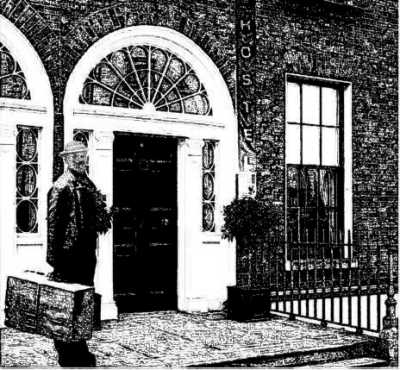
Earlier, on a chilly but bright day in late-March, I had arrived from Atlanta, Georgia, USA to begin my six-week adventure of a lifetime. An adventure I had planned for months. Tired from nine hours of cramped coach seats and a lengthy layover in Chicago, I had exchanged some currency and made my way to the Information Counter in the main lobby. Soon I was perched on the top deck of a municipal double-deck bus, headed toward city centre, marveling at the mix of medieval, Georgian and modern architecture of the more than 1,000-year-old capital of the Republic of Ireland. At a bus stop, guaranteed by the jolly driver to be the closest to the hostel, I surveyed a drab, working-class neighborhood. Sure wasn't the beautiful countryside, with its 40 shades of green and brightly-painted houses, I remembered from a short visit – a gift from our five children – with my wife 18 month earlier. More like one of the neighborhoods I grew up in on the Southside of Chicago. (Stop, Richie, I chided myself … you're not here just for the beauty, the magic of it all - you're here on a mission). My mission was to find family. That is, genealogical records that would reveal details of my heritage. Irish on both sides of my austere family, neither parents nor grandparents said much of anything about being Irish. Mostly 'we're Americans'. Out of years worth of stifled curiosity, sparse information from a cousin and some of my own library research, I was determined to learn where and from whom I came. Finally, retired from my work career, self-employed as a handyman with my own scheduling and a tight budget, I took off. The first passerby pointed me in the direction of the hostel. Spying the large suitcase, he quickly added it was three blocks and shook his head. As he walked off, I thought, if a part of doing Ireland on a tight budget is staying in hostels, taking public transportation ...I can sure tote my bags a mere short three blocks. Arriving at the bottom of the narrow stoop at the entrance of the 4-story frame facility, I stopped to catch my breath. My C.O.P.D. – Chronic Obstructive Pulmonary Disease – was reminding me that in my trip excitement I had forgotten several doses of maintenance medicine. Inside, lugging the bags past solemn-faced youth bundled in layers of dark clothing and lounging on faded overstuffed couches, I came to the reception desk. An earring-adorned young man and a harried-appearing young woman, both with European accents I didn't recognize, briefed me about the facility, handed me a plastic key card, two folded sheets topped by a pillow cover and pointed the way to Room 403, a fourth floor walkup. The floor of the cramped dorm room was a hodge-podge of tossed clothes, boots and miscellaneous – various piles and postures of disarray. Immediately inside the door, against the nearest wall, was a metal frame double bunk. The lower bed, its occupant snoring contentedly beneath a heavy down cover, was cordoned off by a low wall of filled plastic bags and boxes. To the right, along one long wall of what appeared to be a room of eight by fifteen feet, there were two double bunks, with a small wash bowl beneath a wall-mounted mirror at the end. Opposite, eight waist-high narrow metal lockers, backed up to the wall at the foot of the fourth double bunk. The far wall was mostly a large window above a silver-painted steam radiator. The same noisy strains and weird rhythms heard in the Chicago six-flat of my youth belched from it. The window, wide open to the afternoon chill, provided little relief from the close, hot interior. In front of the radiator stood a large round stool. It looked like the brightly colored stools circus elephants performed tricks on. This one, though, was more the color of the institutional yellow walls of the room, its paint also soiled and peeling. This was to be my economical 'home' for six days. Eyeing my surroundings, I wondered what I had expected. My one and only experience with dorm living was a three-year enlistment in the U. S. Army. Back then, the barracks (super-tidy by command and our collective sweat) were comparatively spacious. What I saw, stood amidst and silently questioned, would have turned a drill sergeant into a raving maniac, and my neatnik wife, aghast, casting incredulous glances my way. Suddenly, I felt people looking at me.... 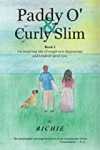
~~~ (part 2 next month!) Richie Patton is the author of the 'Paddy O' & Curly Slim' Saga that you can view at his Amazon Page |

View the Archive of Irish Phrases here: http://www.ireland-information.com/irishphrases.htm |

|
The winner was: terry.ryan1613@sbcglobal.net who will receive the following: A Single Family Crest Print (usually US$24.99) Send us an email to claim your print, and well done! Remember that all subscribers to this newsletter are automatically entered into the competition every time. I hope that you have enjoyed this issue! 
by Michael Green, Editor, The Information about Ireland Site. https://www.ireland-information.com Contact us (C) Copyright - The Information about Ireland Site, 2019. 17 Páirc Ghrainbhil, Carraig Dubh, Contae Baile átha Cliath, Ireland Tel: 353 1 2893860 |

|
MARVELOUS GIFTS FOR ANY OCCASION FREE DELIVERY TO YOUR DOOR 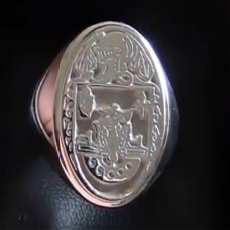
BIG REDUCTIONS! Stunning Family Crest Signet and Seal Rings 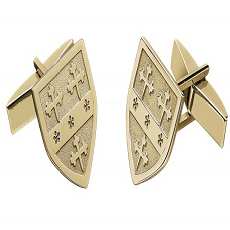
DISCOUNTED FOR A LIMITED TIME Elegant Cufflinks 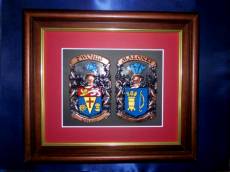
Incredible Family Crest Plaques Made in Ireland 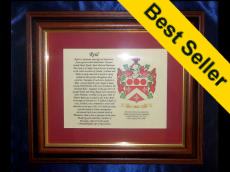
Superior Framed Family Crest Parchments 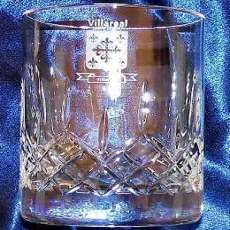
Gorgeous Glistening Galway Crystal 'Your-Name' Old Irish Sign NEW DESIGNS! 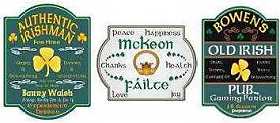
From US$34.99 - Free Delivery 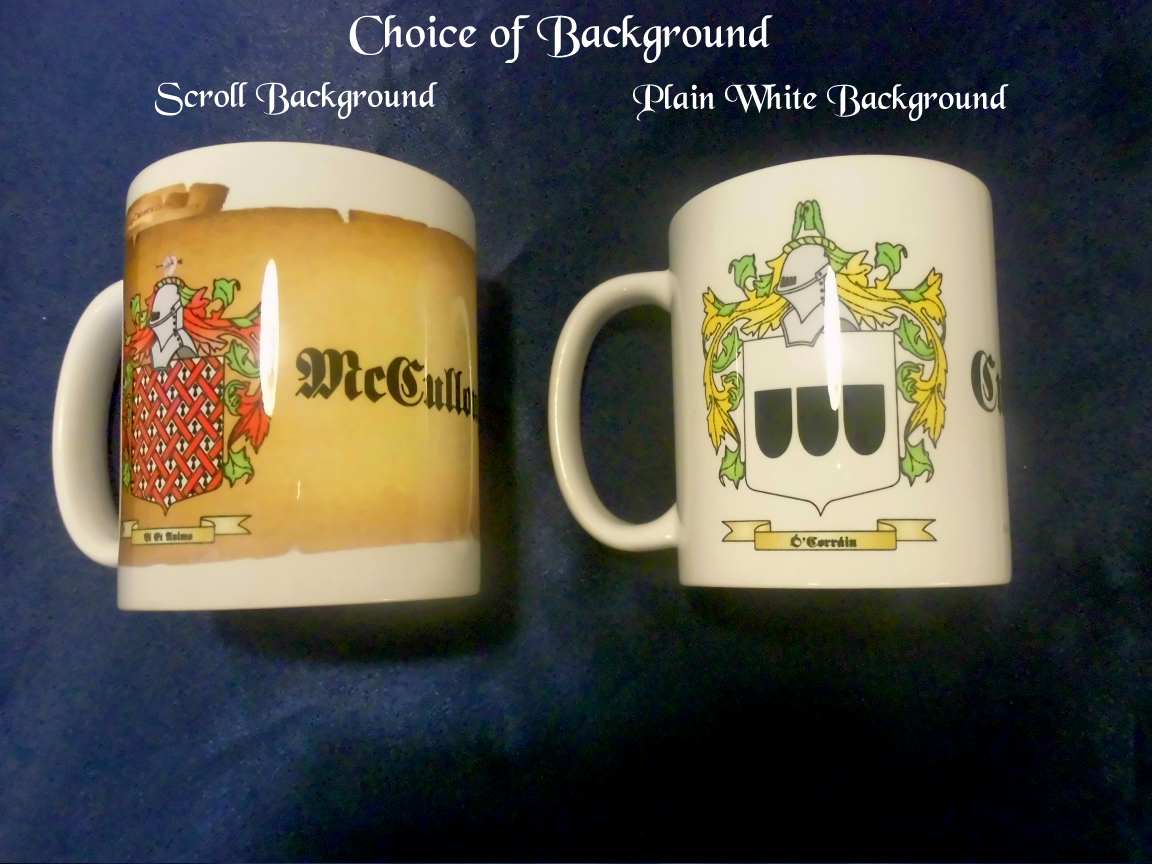
New Designs available on our Coffee Mugs 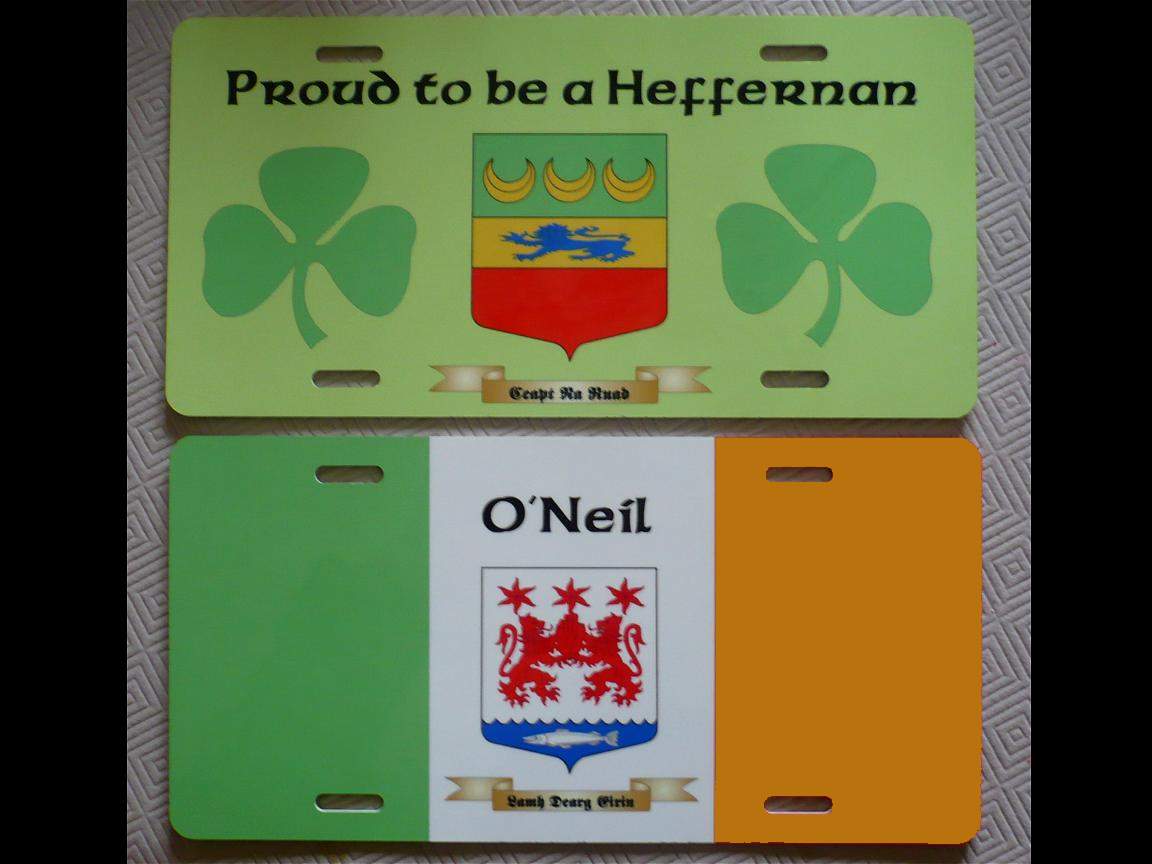
Personalized Licence Plate 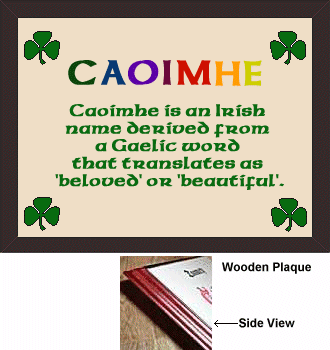
Personalized First Name Plaque. Great for Kids! 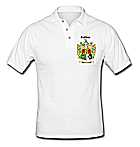
'Your-Name' Polo & Tee Shirts 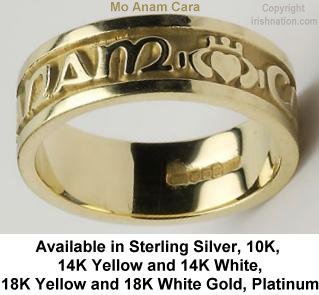
From US$69 Delivered BIG REDUCTIONS! Stunning Engraved Rings from Ireland with Irish Language Phrases. Mo Anam Cara: My Soul Mate Gra Dilseacht Cairdeas: Love, Loyalty, Friendship Gra Go Deo: Love Forever Gra Geal Mo Chroi: Bright Love of my Heart SEE MORE GREAT OFFERS AND DISCOUNTS AT: IRISHNATION.COM FREE DELIVERY FOR A LIMITED TIME! |
